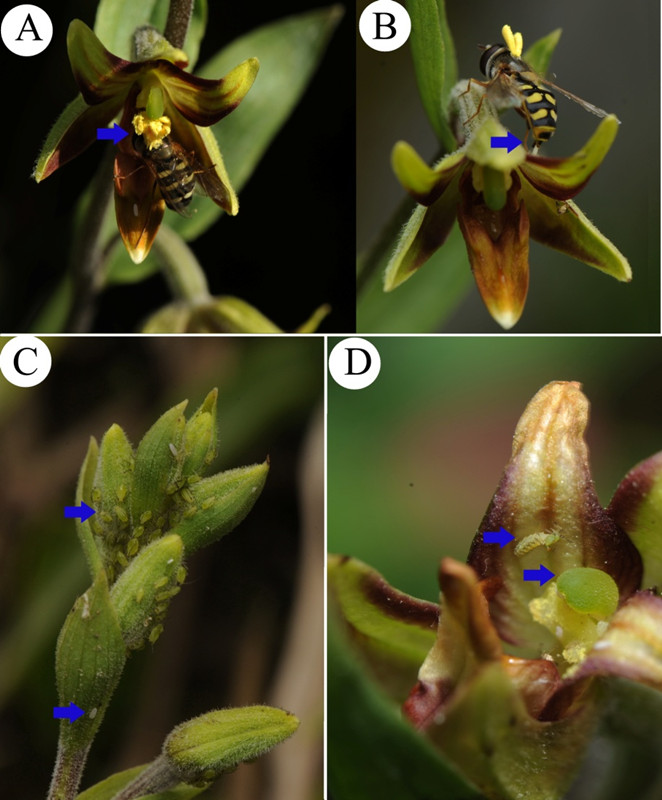Why does floral deception evolve? It is one of most challenging questions for evolutionary biologists. Floral deception has evolved in at least 7500 species of angiosperms, of which two thirds are orchids. Although Charles Darwin distrusted floral deception in orchids, pollination-by-deceit appears to be dominant by many lineages in Orchidaceae. Epipactis veratrifolia (Orchidaceae) is a model system of aphid mimicry as aphidophagous hoverflies lay eggs on false brood sites on their flowers. However, to date, we still don’t know the origin and pre-adaptation of this unique mimicry system.
Dr. JIN Xiaohua of Institute of Botany, collaborated with Dr. REN Zongxin and Prof. WANG Hong of Kunming Institute of Botany (KIB), and other colleagues to try to understand why aphid mimicry in Epipactis evolves. The research investigated the pollination biology and chemical ecology of E. veratrifolia across 10 populations along Nujiang river, northwestern Yunnan. To understand of the pathway of pollination system evolution, this research reconstructed the phylogenetic tree of the Epipactis lineage and mapped the known pollination systems of previously studied species onto the tree.
The results indicated that biological interactions between the orchid (E. veratrifolia) and their syrphid pollinators (hoverflies) were partly mutualistic. At the buds and early flowering stage, some inflorescences of E. veratrifolia were heavily infested with aphids, the larvae of some hoverflies developed to the third instars. After most buds were opened, all aphids were consumed by larvae, at this stage, flowers failed to secrete nectar and produced epidermal sculptures and scents that mimicked aphids. Phylogenetic mapping indicated that pollination by aphidophagous hoverflies was an ancestral condition in the genus Epipactis.
The results tritrophic interaction (pollinator/larval predator-orchid-aphid) may be an intermediate stage between plant-predator mutualism (or indirect defense) and floral deception. The propose that a fully deceptive mode of pollination may evolve directly from mutualistic or partially mutualistic systems that maintained the fidelity of the original pollinator(s) even though rewards were lost.
These findings were recently published in the open-access journal BMC Plant Biology , entitled by “The evolution of floral deception in Epipactis veratrifolia (Orchidaceae) : from indirect defense to pollination”,. This research was supported by the National Natural Science Foundation of China (31107176), National Key Basic Research Program of China (2014CB954100) and Research Program of the Chinese Academy of Sciences (KJZD-EW-L07). (http://www.biomedcentral.com/1471-2229/14/63/)

Figure 1 Aphids hoverflies (adults and maggots) on buds and flowers. (Image by KIB)

Figure 2 Phylogeny and evolutionary pattern of pollination system of Epipactis. (B) Mapping ofpollination systems in Epipactis onto the phylogram. (Image by KIB)




